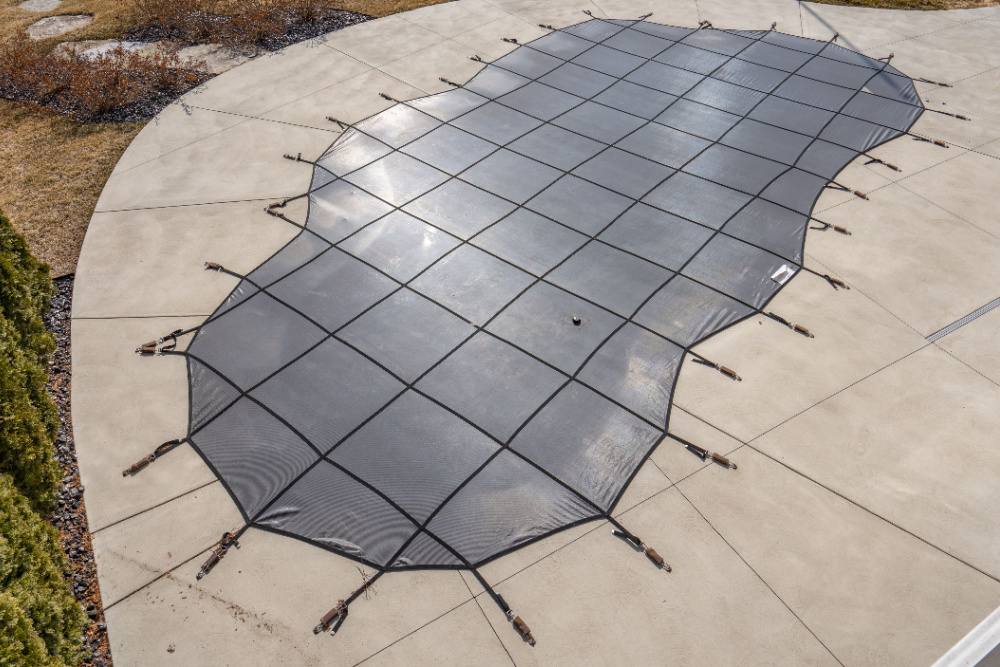During the winter months, knowing how to care for your pool properly when the temperatures are lower is vital. Winter pool maintenance is crucial for ensuring its longevity and being ready to go when the warm weather returns. This article will cover the essential steps and considerations for keeping your pool in top shape throughout the winter.
Preparing for Winter: The Basics
Balancing the water chemistry
Before you close your pool for the winter, it’s crucial to ensure that the water chemistry is balanced. This means checking and adjusting the pH, alkalinity, and calcium hardness levels. Balancing the water helps protect the pool from corrosion and scale buildup during winter. Additionally, if you have a saltwater pool, ensure the salt level is within the recommended range. This step is crucial because imbalanced water can significantly damage your pool surfaces and equipment.
Cleaning and removing debris
Thoroughly clean your pool before closing it for the winter. This includes brushing the walls and floor, vacuuming debris, and emptying the skimmer baskets. Removing leaves, dirt, and other debris is essential because they can cause staining and promote algae growth over the winter. It’s also a good idea to backwash or clean your filter to ensure it’s in good working order when you reopen your pool.
Lowering the Water Level
The right level for winter
When preparing your pool for winter, it’s important to lower the water level. This is typically done just below the skimmer for mesh-covered pools and a bit lower for solid-covered pools. The exact level can vary depending on your pool type and the winter cover you use. Lowering the water level helps prevent freezing damage to the pool structure and skimmer. However, it’s important not to drain the pool completely, as this can cause damage to the pool’s structure and liner due to hydrostatic pressure.
Protecting the skimmer
If you live in an area where freezing temperatures are common, it’s critical to protect your skimmer from ice damage. After lowering the water level, consider using a skimmer cover or a Gizmo, which is designed to absorb the expansion of freezing water and protect the skimmer from cracking. Additionally, adding pool antifreeze to the lines can help prevent them from freezing and bursting.
Covering Your Pool
Choosing the right pool cover
Selecting the right pool cover is essential for winterizing your pool. A quality winter pool cover keeps out debris, protects the pool from harsh weather conditions, and can help prevent accidents. Different types of covers are available, including mesh covers that allow water to drain through and solid covers that prevent water and debris from entering the pool. Solid covers often require a pump on top to remove accumulated water and melted snow.
Securing the cover
Once you’ve chosen the appropriate cover, ensure it’s securely fastened. A properly secured cover will keep debris out and prevent accidents. Covers are typically anchored to the deck for inground pools, while above-ground pools often use cable and winch systems. Check the cover regularly throughout the winter to ensure it remains tight and free from significant water accumulation or damage.
Winter Pool Equipment Care
Protecting the pump and filter
The pump and filter are the heart of your pool’s circulation system, and protecting them during the winter is important. After lowering the water level, drain all water from the pump, filter, heater, and any other equipment. This can usually be done by opening the drain plugs on these devices. Store any removable parts like pump baskets and filter cartridges in a dry place. If you have a heater, blow out any remaining water with compressed air to prevent freezing damage.
Handling hoses and accessories
For above-ground pools, disconnect and drain all hoses. Store them in a dry place to prevent cracking and damage from freezing temperatures. Ladders, diving boards, and other accessories should also be removed and stored in a safe place. This not only protects them from the weather but also discourages the use of the pool when it’s closed.
Monitoring Your Pool During Winter
Regular Cchecks
Even after you’ve closed your pool for the winter, it’s important to check it periodically. Make sure the cover is secure and free of debris or water build-up. If you use a solid cover, pump off any standing water to avoid strain on the cover. Also, periodically inspect your pool equipment, especially after severe weather, to ensure everything is intact and in good condition.
Adjusting for weather changes
Be prepared to adjust your winter maintenance routine based on weather conditions. After heavy snowfall, gently remove snow from the pool cover to prevent excessive weight load. Check the water level and chemistry during unusually warm spells, as algae can grow in warmer temperatures. Keeping an eye on your pool throughout the winter can prevent surprises and potential damage when it’s time to reopen.
Conclusion
Maintaining your swimming pool during the winter months is an essential part of pool ownership. Proper winterization protects your investment and ensures that your pool is ready for fun and relaxation once the warm weather returns. By balancing the water chemistry, cleaning the pool, adjusting the water level, covering the pool, and caring for your equipment, you can rest easy knowing your pool is well-protected.
Are you in need of a new swimming pool and need a swimming pool builder in Temecula? Contact us today.

